Video Menu
My Favorite Videos
My Favorite Videos
Arms Research Introduction
Sorry, you need to be a member to access this video.
You Are Just Seconds Away - Become a member here!
Already a member? Log in now

Introduction to the last 8 months of research on the optimal arm and body movement in the golf swing based on data from 3D Motion force plates, launch monitor and high speed cameras.
All right guys, are you ready?
Eight months, over 50,000 swings.
I wanted to take advantage of this time, this lockdown for this COVID chaos, and I always had burning questions about the swing, That things that I wanted to know, definitive answers on that.
I could measure with things like a force plate and a launch monitor, and high-speed cameras, and those types of things, but do it in a qualitative way and in a quantitative way that we could actually say, look, this way is superior based on X, Y, Z.
Now, when I started out with this, the idea behind it all was really about elevation in the swing.
That's one of the things that I've always looked at in the golf swing as a variable.
You can see golfers who have really, really high hands, really low hands, people who have really steep shoulders, really flat shoulders, and everything in between.
And based on what you do with your arms can have a huge determinant in how you're going to swing down.
But it really grew into something so much more involved than that.
I really started testing everything.
And I mean everything.
Everything that you've probably ever heard of in the golf swing.
I tried it.
I tested it.
I measured it with force plates, with the launch monitor, to see what it did, my angle of attack, my face strike, all of these things.
And I really started wanting to look at the swing in such a way that addresses the main problems that affect the majority of golfers on the planet.
And one of the biggest things is right side dominance in the swing.
Now, there's a lot of different ways you can hit the ball.
And if you look at the PGA Tour, there's a lot of ways that it's getting done out there, of course.
But I have noticed a shift over the last 10-15 years, perhaps, that more and more tour pros are moving toward a specific type of swing.
And I believe that so much of that has to do with the shift towards power.
And of course, right now, where Augusta National is next, where the Masters is next week, And we're going to watch Bryce and DeChambeau possibly swing a 48-inch driver and hit some shots that are going to be unimaginable.
And I've played Augusta before.
And as you guys know, I'm a pretty long hitter.
My club head speed's in the mid-120s.
And so I can move it.
And even that, seeing some of the shots that are reading about some of the shots that he hit in, the clubs he hit into Augusta in his practice round last week are things that I can't even imagine.
So it's going to be really interesting to watch.
But the game has absolutely shifted.
When I grew up playing, I learned on persimmon woods with ballada balls that if you miss hit them slightly, they left you a big smiley face.
So those of you who've been around a long time playing golf, you know exactly what I'm talking about.
And so back in the day, There was always this basic idea of a golf swing being a lead side dominant motion.
That you're swinging the club and you're letting centrifugal force release the club for you.
And I would say that over time, that's probably been the majority of our really, really great players and ball strikers have subscribed to that philosophy.
And I myself, I grew up learning how to play golf from Jack Nicklaus golf, my way tapes.
And I had a big reverse C and big lateral drive, high hands and, and all of those things and a big slice to go along with it.
I wasn't able to put it together nearly as well as Jack did, But I got decent enough where I got a college scholarship and then later turned pro in my early twenties and moved to Florida and was practicing.
And my instruction background and learning how to swing and teaching from a very young age and trying to understand the swing has always been about, you know, Really, getting somebody from point A to point B the fastest way possible and doing it in a way that's safe on the body.
Because I had a ton of injuries from all the instruction that I received early on.
And I also left just really confused because there's so many different ways to really swing the golf club.
And if you, I mean, if you look at the golfing machine, I'm no golfing machine expert by any stretch of the imagination.
I read the book, you know, 12, 15 years ago, probably.
And, and so I, but one of the things I took away from that, that I did think was interesting was this idea of swinging versus hitting.
And I think that that even that is a, is a pretty big oversimplification of it.
But I liked the idea of thinking about the golf swing in those two basic paradigms, because, and you can start to understand your own swing and what you're doing mechanically, that's causing you so much trouble and so much inconsistency and poor strikes and all those things.
If you take a look at it from that simple perspective, a rotary swing has always been about rotationally swinging the golf club, not rocket science, right?
I'm no rocket surgeon.
I didn't come up with the most clever name.
I'm using my body to turn and power the club.
And so my arms and hands pretty much chill out, but it doesn't mean that you can't use some arm speed in there or shouldn't even.
I, and I certainly, I do, I, it's part of the way that I'm able to produce the speed that I do, but there's complications in the swing.
And if you're not, you know, A person who has a naturally good weight shift and hip rotation and arm swing and those types of things, and you're really right side dominant, like we see so many, especially mid to high handicap golfers, then that swing pattern, it takes a long time to learn.
And I'm all about speed.
I, you know, I race cars, I race mountain bikes, I broke my neck.
I've raced just about anything on wheels.
And I love going fast.
And I love helping my students improve as fast as I can.
And so this summer, when I started testing everything, I really wanted to say, okay, how much right side can you put in the swing?
And what does the force plate data show?
Does it show that I produce more force from the ground?
So I'm more efficient and how I produce speed, or do I see these things that I'm going to talk about in subsequent videos is called double peaks, where we're seeing a bounce and a reverberation back into the body of ground forces.
And when the body and the spines in a vulnerable position, because as you guys know, injury prevention is everything to me.
And I'm going to talk about in some of these videos, why?
Because the laundry list of injuries that I'm dealing with in my own personal body, and as I get older, you know, they definitely are showing their head.
So, and I know so many of you can relate to that, you've done all kinds of different stuff, and your body just doesn't quite feel like it did in when you were in your 20s.
So I wanted to take a look and say, how much right side can you put in?
Is it better to have more right?
Is it better to be more left?
Is it better to be more core driven?
Can you push off the right?
Should you pull with the left?
Which one makes the most sense?
Which one's going to work for the majority of people to get them there faster?
And there's what it's really all about.
What is there?
To me, that's when you can step up to a golf ball and make an effortless swing, rolling out of bed, and pure it right out of the center of the face, and not have to go through a laundry list, a checklist of things that you have to do before you can swing a golf club, because it just leads to paralysis.
You're frozen over the ball, you're trying to think through 50,000 things.
And of course, when you're learning, we have to go through some of those processes.
But a lot of golfers never get out of that.
They're gluing their swings together with just these really complicated mechanics, and it's just not realistic, unless you've got eight hours a day to pound balls, which in this day and age, hardly anybody, unless you're a touring professional, has that kind of time.
But so how do you make the movement patterns of the golf swing simple enough that anybody of any fitness level, any flexibility level, any strength level, average size, average height, I'm sure you guys have noticed the guys on the PGA Tour, now look, a lot of these guys look like linebackers, they're not 5'9 like me, I'm pretty much perfectly average, 5'9, 165 pounds, you know, normal strength relatively.
So for me, How do I get the average person, guy and gal who isn't some athletic superstar and genetic genius?
To be able to hit the ball well enough to consistently shoot around par?
Because at the end of the day, that's really what it's all about.
We want to go out and hit the ball really, really well, so that the game is enjoyable, it's fun, it's effortless, and shoot a good score.
And that's really, to me, When we get those pure, effortless shots that feel like we did nothing to get the results that we're looking for, that's what it's all about.
So how do I get you there faster?
And that's really what this whole past eight months and all of the damage I did to my body, testing all these different ideas.
In fact, my pinky, probably can't tell from there, But my pinky's pretty swollen from trying to see how much parametric acceleration I can create from the left side, using my hand to pull up against the shaft.
So I'm going to talk about a lot of these things.
Some of them are going to be a little bit more advanced physics concepts and things that are currently being researched.
You don't really need to know all of this stuff at any low-level technical understanding, but I did test all of these things because I thought it was important to finally be able to say, look, I'm going to take however long that we're in this chaos, the lockdown, and the whole world is basically shut down to a large degree, and I'm going to live in here, which I did.
And I'm not exaggerating for eight to ten hours a day.
Not every single day.
I would go out and play golf, and I'm going to talk about some of that stuff.
But eight to ten hours a day hitting balls on a force plate with a launch monitor, going back and looking at videos saying, okay, if I add some right hip drive, what does that do?
If I add some right arm throw, what does that do?
What does the data show me?
And then I did this process over eight months and trying all these different ideas and not just trying them in here.
There's definitely a difference between hitting in here, into a screen, not seeing the ball fly other than the digital recreation of it, and not being able to adapt and adjust to what I'm seeing with the ball flight.
So I would do it in here and get my swing to work.
Okay, today I'm adding a lot of right side push, right arm throw, or right shoulder drive, or left arm pull, or whatever it may be.
And then I'm going to go out and play with that.
And sometimes I would play with those changes for several days or even several weeks.
And throughout the whole course of this, trying all these different random things, and some of them were things that I thought were pretty ridiculous, but I wanted to try them anyway, just to see what would happen.
My handicap didn't change the whole season.
I started as a plus one, plus 1.
4 at the beginning of the season.
I hadn't played for two years.
I talked about that in a previous video for a bunch of different reasons.
But so I walked back onto the course after not playing, I played three rounds in two years and came back as a plus 1.
4, which is huge to me because the whole thing about the golf swing is once you have it, it should be low maintenance.
I shouldn't have to work on my swing all the time.
And I didn't for two years, didn't do anything at all.
Literally, I didn't even play golf.
So for me to be able to walk out as a plus 1 .
4, and really, I probably should have been a plus four, my putting averaging 36 or 35 putts around, I think at the beginning of the season didn't help my scoring average.
But long story short, I hit the ball great.
And throughout the whole season, my ball striking, obviously there's, you know, the random round where you shoot 78 or something, You have kind of a bad round because you're trying a bunch of different things and it's hard to glue all that stuff together.
But for the most part, my scoring average stayed exactly the same.
My handicap stayed exactly the same.
So the point to that is you can play golf at the level that you're probably seeking to play it at, or, you know, this may be a lot better than you even think you can play at.
But you, I promise you, if you understand how to get a really simple mechanical golf swing, that are the mechanics of a simple swing, you can play at this level or even better and do it effortlessly and take the strain off your body.
But the truth is you can do all sorts of different things and play great golf.
And that was another fun factoid to me is I tried really, really high hands.
I showed you guys some of the videos where I would stand a little bit taller.
I would have really high hands, relatively flat shoulders.
Now, obviously from here, I need to do something to shallow out the swing.
So I would add a little throwing motion, a little lateral drive, a little more rotation.
It worked just fine.
And then I would go to lower hands and then I would say, okay, well, as I go lower hands, I can add some more body rotation into the swings.
I don't have to wait for my club to shallow out so much.
So I'd add some right hip drives and right shoulder drives and right arm push.
All of those things worked essentially equally well.
There's advantages and disadvantages to each.
And I talked about some of those things, but as I get into more detail in some of the subsequent videos, We'll get into some more of that stuff because there was a lot of stuff also that really dealt with injury.
I had six, we counted them now seven with my pinky, seven different injuries this year.
And some of them were pretty, pretty gnarly in terms of debilitating.
So I don't, I don't want to get into all that stuff yet.
As I get into the details of what we're going to be talking about doing, I'm going to get into it.
But what I really want you to understand is what, what are we really trying to do?
Well, I'm trying to look at the swing from a per, a point of view that says, what does the average person really, really struggle with?
Now, you guys may look at your own swing and think that that's how everybody swings or, or you look at a handful of swings or your buddies and you think, oh, well, that's how all golfers swing.
Well, our, my team and I have done eight over, I think now over 80,000 online swing reviews.
I've done more than 10,000 in-person lessons.
And so from that perspective, I can take a pretty high level view and look at things from, from a outside in perspective and say, well, after seeing 80,000 swings or I've seen way more than that, I'm certain, you know, what do these people really, really tend to struggle with the most?
And what can I do to get them over that hump so they can play great golf?
The number one thing that most golfers struggle with when they're trying to have a swing, a golf swing that is lead side driven, relatively passive release, that basic motion is that they want their right side to take over.
Many of you guys have talked about that.
I see it all the time in the Facebook group and then questions on the website, you know, their right side just takes over and they cast it.
Most golfers, if you kind of take them to the top, they, They're this right arm's really tight and then they cast it and then they scoop and chicken wing and, and all those things.
How do you take that golfer and give him a swing that allows him to shoot in the seventies or break par?
And, you know, just being lead side dominant, while I think that's the easiest, most effortless way in general, Not everybody has the ability to kind of really work through getting out of that right side dominant stuff.
And you don't necessarily have to, you just have to change your pattern a little bit to allow for that.
So that's what we're going to talk about as we keep going through some of these changes.
That are going to be available for you guys to test and try out to see if this movement pattern is more consistent for you.
It leads to more consistent strike because that's a really, really big thing.
Most golf, when you're lead side dominant and you're using a pulling swing, you can see the club snaps really quick at the bottom, but my body's moving relatively effortlessly, but I'm not trying to do a whole lot with my, uh, you know, hand, my right hand, especially through the hitting area.
Now, if you understand how to get your body to move correctly, using the dead drill and just using your hip rotation, your body rotation, letting the arms be passive.
It's quite simple, but so many golfers want to really shove with that right hand.
Can you take advantage of that and alter the release slightly so that the golfer can get more consistent contact and more clubface control instantly?
I believe you can.
Uh, another big problem over swinging.
How many golfers out there have this really long swing, or they get way across the line and all these different things.
It's super, super common.
And it leads to just a really complicated rerouting pattern to get the golf swing, get the club back on plane, back on path.
And so I really want the arms, as I was looking at it, can I, is it easier to have the arms higher?
Is it easier to have the arms lower?
What changes does that make?
That's another big one that if you struggle with over swinging, getting across the line, flying elbow, disconnected, all those things, Understanding this movement pattern that I'm going to show you will help you completely eradicate that instantly.
Because a lot of times, people just don't know what to do with their arms in the downswing, or how to use their body correctly in the downswing.
And that leads to a complicated backswing.
So we're going to talk about that.
Inside takeaway, right?
How many golfers do this?
Super, super, super common.
This thing is really difficult to recover from.
And so you lead into all kinds of problems.
And we started getting into the flip and scoop at impact.
How many of you guys struggle with that?
Another huge one, poor compression on the ball.
You've got weak ball flight, you know, no real good penetration on the ball, no good compression, you know, poor divots, you know, directional control of the club face.
And really at the end of the day, lack of speed, right?
The average golfer is stuck at 90 miles an hour, 95 miles an hour with the driver.
And that's crazy, But it's really just due to inefficiency and not understanding how to get your body to move to produce power.
And a lot of golfers, like, again, to me, this whole left side, I mean, that's, as effortless as it gets, I can hit the ball a long ways.
It feels very rhythmical, but my right side can't participate very much in that.
And I tested that to see if I'm going to be very lead side dominant swing, how much can I use the right side to help out?
The answer is not much.
You start leading into a flip really quickly.
I'm going to talk about that stuff in the detailed videos, where we start talking about how the body stalls.
And then if you're using right hand, you flip the hands over and so on.
So, so as I was going through this, I said, you know, how do I take all these, you know, This list of things that every golfer struggles with and build a movement pattern that guarantees success, no matter what your physical fitness level is, your, you know, your ability, your strength, your flexibility, you know, that stuff that anybody can go out and, and really start hitting the ball like a rockstar, truly hitting the ball proper, hitting it with penetration, with good height, shallow angle of attack, all these things.
So I basically set out and said, I'm going to create a list of requirements.
What are the things that I really want to build into this movement pattern that anybody can accomplish, who doesn't, you know, their lead side just doesn't even exist to them.
And that's really what it comes down to is most golf, most golfers who are playing right -handed golf are right-handed or very right side dominant.
And so they want to push and this leads into all sorts of problems when it's done incorrectly.
So how do you get that person who, who couldn't do anything with their left side of their body, just because they just never train it, they're very right side dominant and get them to play proper golf.
Well, here's my list of requirements to get that to happen.
Number one, injury prevention is everything that is non-negotiable for me.
And as I go through this stuff, I'll explain more about my own personal injuries because they had an impact on how I was going through this study.
And what I was doing with my body and my arms and the things that I felt.
So injury prevention, always at the heart of everything that we do.
Number two, consistency.
You have to be consistent.
That is the most important thing in golf and it's what everybody wants.
But when you're timing a flip or timing a scoop or, you know, getting out in front of the ball, all these things make it impossible for you to have consistent contact, to have clubface control, to be able to have a kind of more compact nature to the swing.
You know, it's not that you can't have a big, long, complicated swing.
You can have high arms with the high hands with the stuff that I'm going to show you.
It adds a little bit of complication to things.
It adds some more moving parts, but again, you can totally do it.
And that's what I'm going to talk about in some of the detailed videos.
There's, you know, The elevation of your arms and hands relatively doesn't matter when you're going through this movement pattern.
In the way that I'm going to show you.
But it will, you'll, you'll have a preference, but it'll give you some flexibility there.
But you'll understand that there's definitely one way that's going to make your life easier than the other.
Another requirement, the third one was a shallow angle of attack.
That to me is huge.
I know many of you golfers, you know, don't even, You're just hoping you make decent contact with the ball and your angle of attack, and your divots don't really matter.
They should, but they don't matter to you right now because you can't control them.
You can't consistently do the same thing over and over again.
But as you improve, as you start learning how to have control over that club face, and you'll start to realize how important trajectory control is.
And again, most of you, I'm just trying to get the ball up in the air, right?
I promise you, You will start to understand how critical having a shallow angle of attack is for having these effortless golf shots.
Because when you're hitting down on the ball, like so many golfers have been taught for so many years, I hate the idea of hitting down on the ball.
I think it's a terrible notion in describing, but I understand the reasoning behind it, right?
Most golfers are, you know, scooping and flipping and trying to help the ball up.
So they say, Oh, we'll do the opposite.
Try to hit down on it.
It's not that that's wrong, but you don't want to try and do that.
If you actually look at the data, the tour pros are extremely shallow into the ball.
And that is a really, Really important part of being a consistent ball striker is getting consistent contact with a very shallow angle of attack.
It dramatically increases your margin of error so that if you come down too steep, you can hit just a tiny bit behind the ball very easily.
You lose a ton of distance, you lose a ton of height, you lose speed and so on.
So a shallow angle of attack was really critical.
And that's why using the launch monitor, and that's why I use the GC quad, Because it's so much more accurate for detailing what the actual club head and face are doing than anything else out there.
So I spent a ton of time really working on how to get, you know, taking advantage of physics and leverage, you know, the ground effect, the ground forces, parametric acceleration, lag, all these things to get the perfect, consistent, shallow angle of attack so that you could get a really consistent, proper, simple strike.
Another thing that I want to talk about is learning a golf swing more by feel.
Now, certainly there are mechanics involved in any golf swing, no matter if you're the most feel player in the world.
But at some point, Making the swing really mechanically complex, so that you have to kind of hit these positions is really difficult for the average person to learn.
And it doesn't have to be that way.
How do we take the swing mechanics, which there has to be, you know, the golf swing is a complex movement.
There's a lot of stuff going on, right?
No matter how you slice and dice it.
At times, it may feel simple and effortless.
You just glued all these things together pretty well, with some rhythm and tempo, or whatever it may be.
But in general, you know, The golf swing feels probably pretty complicated to you because of the way that you're moving the golf club.
I wanted the swing so that it could be very simple for, again, anybody, even if they're really right-side dominant, and they could focus more on learning by feel.
Yes, of course, there's positions in the golf swing that we kind of work through, But not learning it in that way and understanding a big picture.
Motor movement pattern that works with the dominant side of the body that allows you to still meet these, you know, these areas of shallow angle of attack and all of these things.
And doing it more by feel is really what I was trying to accomplish in so many ways.
And the other thing I want to do is produce effortless speed.
As I mentioned earlier, we talked, you know, how much lag should you have in the swing?
Is there a benefit to having a down cock?
Should there be a big shallowing move or a little shallowing move?
What about parametric acceleration?
What about ground forces?
All of those things have a huge impact on what you're trying to do in your swing.
And when you understand how to leverage these forces, that's how we start getting towards this effortless speed.
And that's really going to be a big theme of.
What I'm trying to get you to do is that you shouldn't be working so hard in your swing.
When you watch somebody hit the ball properly, whether they're more of a swinging kind of pattern or a hitting kind of pattern, it should still look effortless.
I would say, you know, Rory McIlroy is a definite right side pushing hitter.
But when you watch him hit the ball, he hits it a mile and he doesn't look like he's working that hard to do it.
And then you can take Tiger Woods at lots of different areas.
He's done both for sure.
And he's looked effortless and he's looked like he's swinging out of his shoes.
You can take Davis Love the third, all these different examples of tour pros.
And I'm going to walk you guys through a lot of different tour pros, Especially a lot of the more younger, modern guys who have changed the way that we think about the golf swing in terms of producing power.
These guys are hitting the ball miles and producing tons and tons of speed, while the average guy gets left behind.
Well, Can we take a look at those tour pros and see exactly what they're doing and understand the forces that are involved?
To get the average person to hit that ball 300 yards?
Yes, I believe we can.
So that's a big overview of what we're going to be looking at.
It's all about getting you a simple, Repeatable movement pattern that you can learn faster than anything else that gives you proper golf swing, that gives you proper power.
I set the speed bar minimum at 110.
My club is speeding at 125 on the course, on the driving range and like 121, 122.
So, and that was swinging all sorts of different ways.
And so you should be a huge jump.
If you're not already over 110 miles an hour, at least over a hundred, you should make a huge jump in club head speed production.
Once you start understanding how to move your body in this way and taking advantage of the things that you already naturally do.
That will cause issues in a golf swing.
If you, again, if you look at Homer Kelly, the way he described it, the golfing machine, he said, you basically, if you're going to be a swinger, and again, I don't know TGM expert, and I'm not, you know, going to be leveraging his terminology about things in the swing, but some things that he said, I think make a lot of sense.
And I tested them.
You know, he said that you shouldn't use any right side push.
If you're a lead side dominant golfer, lead side swinger, I tested it.
You can, it's not necessarily that you can't, or you shouldn't, but you know, in a general picture, I think that's kind of a simple way of thinking about it.
If you're going to swing the club, the right side of your body needs to chillax.
You can't really use it.
It's going to start leading to a flip, a steep angle of attack.
And those things were my experience with adding too much right side.
But when you change your pattern to leverage the right side of the body, and you kind of flip the script a little bit to add a couple things to alter the release, then all of a sudden, you can use the side that's been causing you so much trouble.
And you can produce a lot of power, Like you're seeing John Rahm and Tony Finau and Rory McIlroy, and a lot of these players do.
In such a way.
That has a much shallower arm swing, a much simpler arm swing, but a lot more powerful body movement.
So in these upcoming videos, what we're going to look at is start seeing some of the swing mechanic changes that I made, why I did them, what the results were, And then how to get you to be able to swing exactly like some of the best players in the world in a really simple, easy to understand, easy to learn, fast to learn movement pattern.























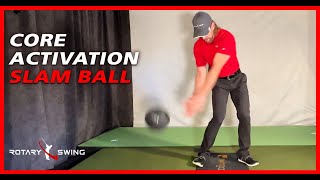





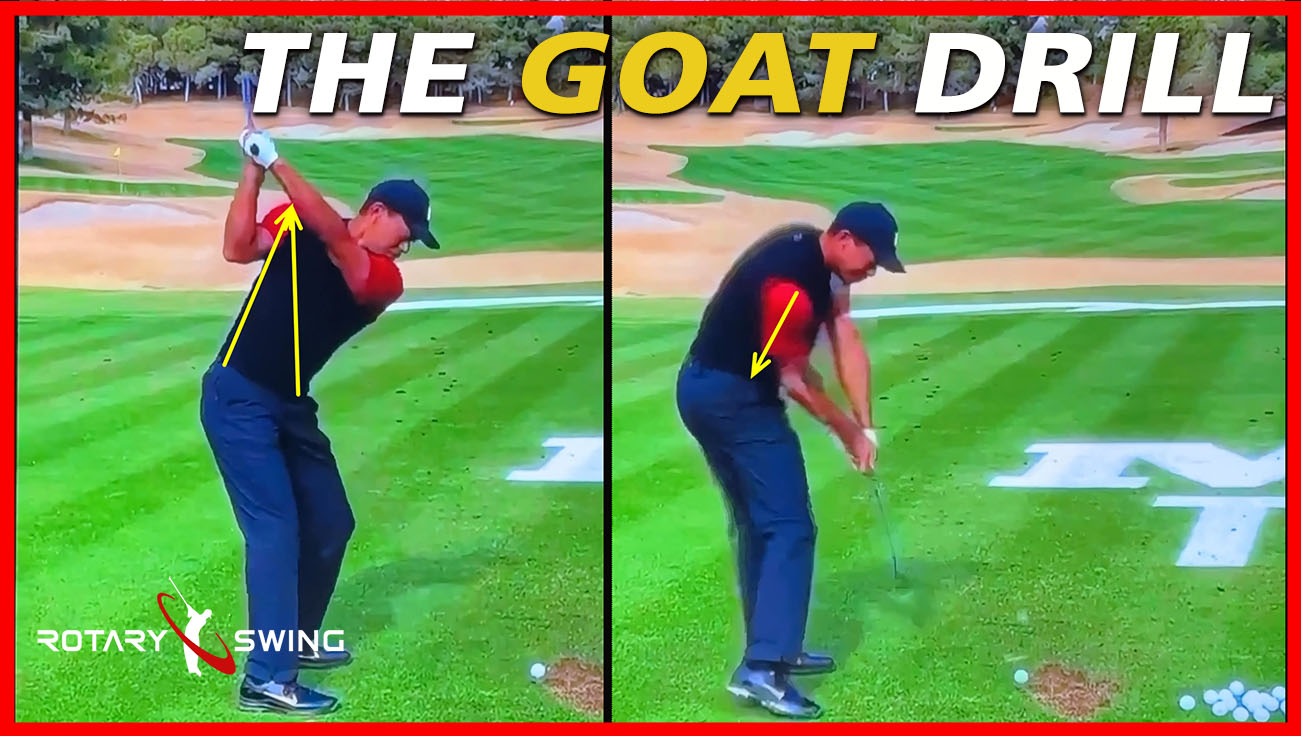


















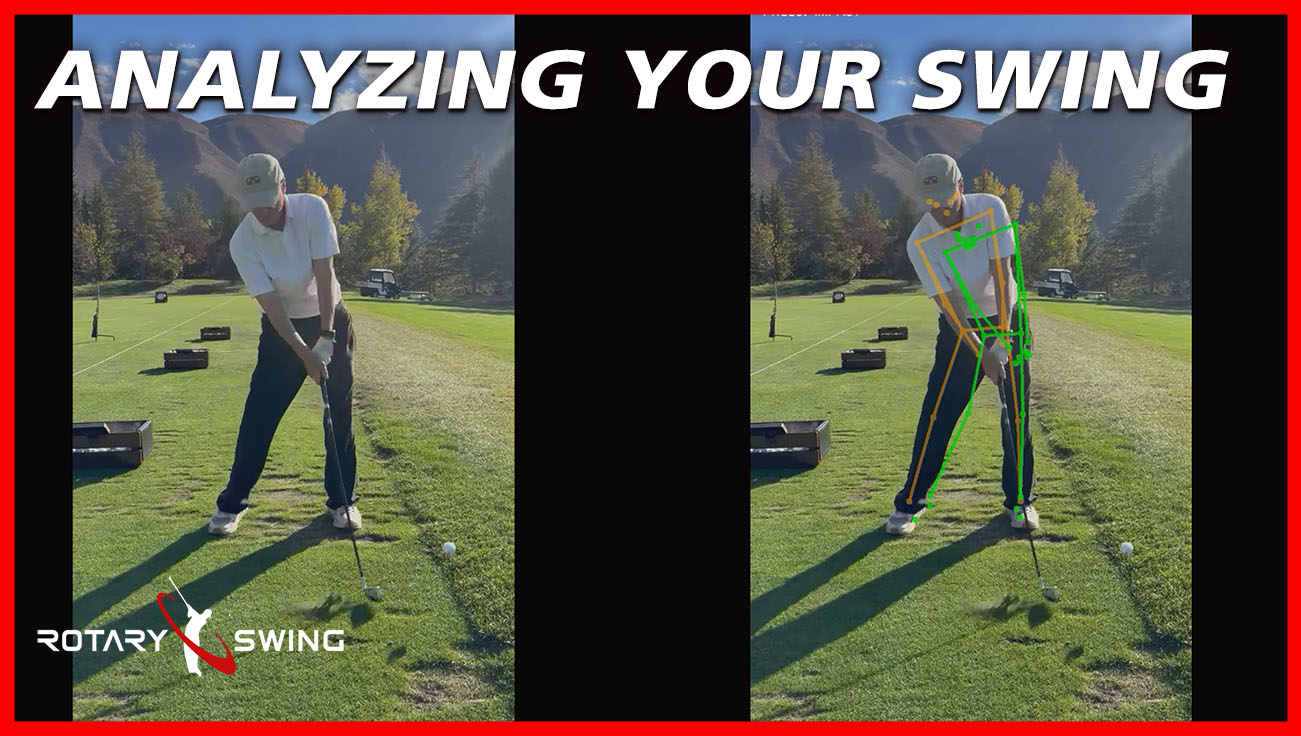






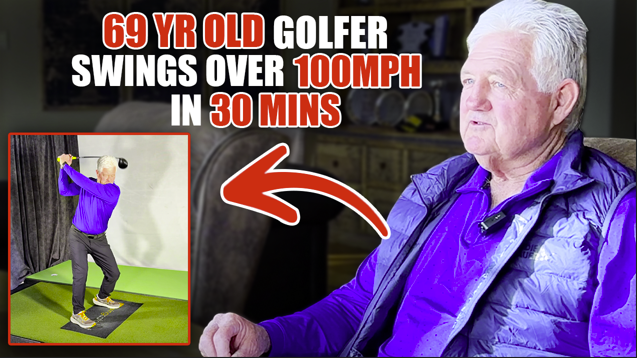
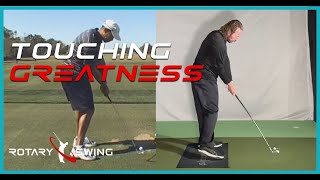





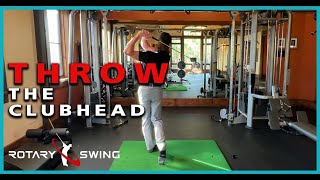







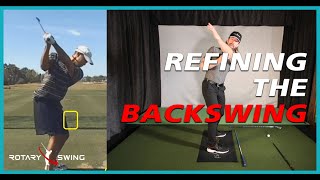







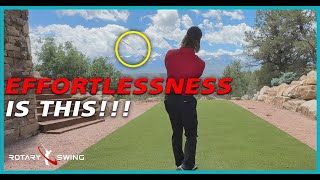
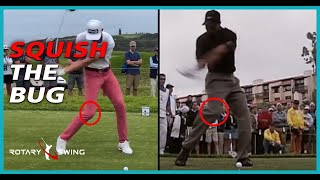
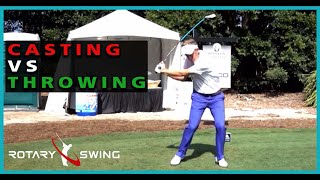



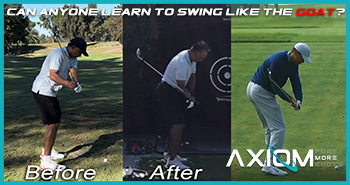






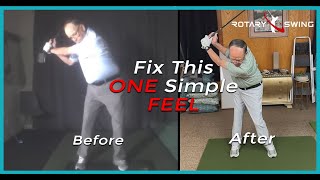











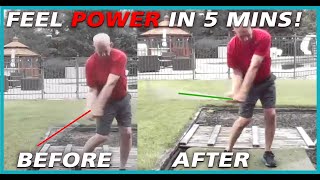


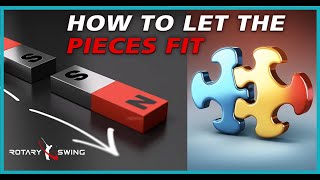






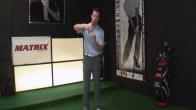













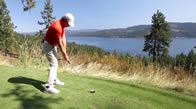



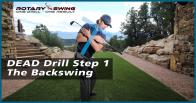

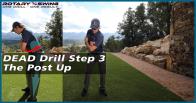










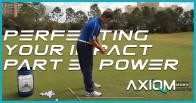











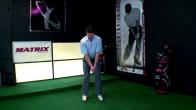



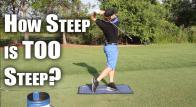






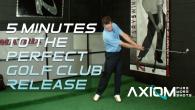








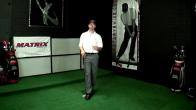















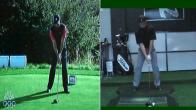



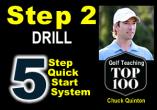






















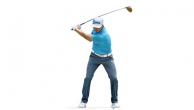

































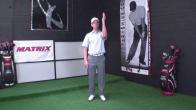




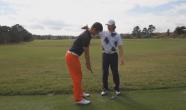















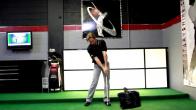



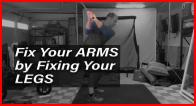


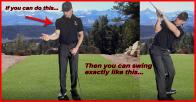




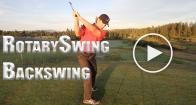

















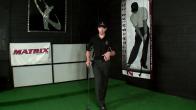







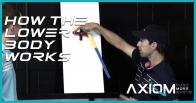












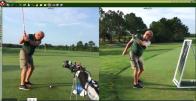






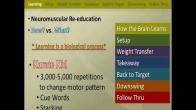


















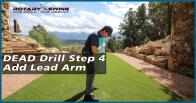


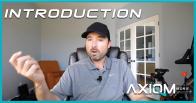

















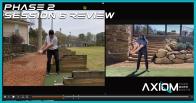







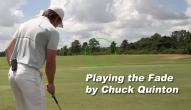











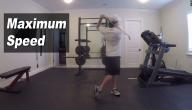

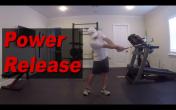
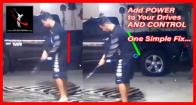


















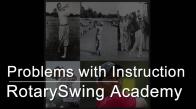







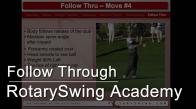










































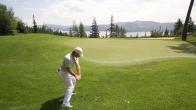

















Luuk
Chuck
Asle
Craig (Certified RST Instructor)
Robert
Craig (Certified RST Instructor)
Chuck
Craig (Certified RST Instructor)
Robert
Chuck
Shawn
Craig (Certified RST Instructor)
James
Craig (Certified RST Instructor)
James
Craig (Certified RST Instructor)
Arthur
Craig (Certified RST Instructor)
Dave
Craig (Certified RST Instructor)
Rayan
Craig (Certified RST Instructor)
Roy
Craig (Certified RST Instructor)
Mike
Craig (Certified RST Instructor)
Tom
Craig (Certified RST Instructor)
Terry
Craig (Certified RST Instructor)
Murray
Craig (Certified RST Instructor)